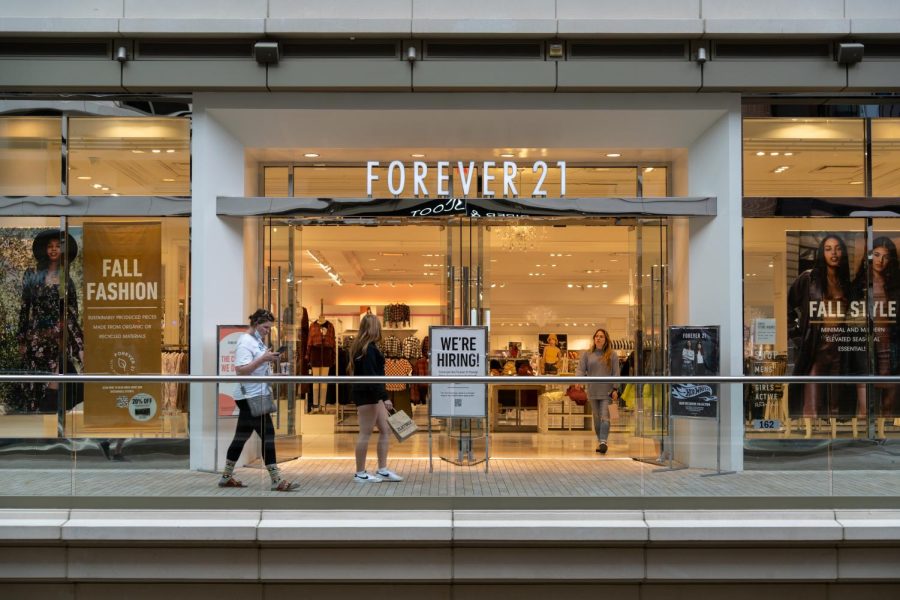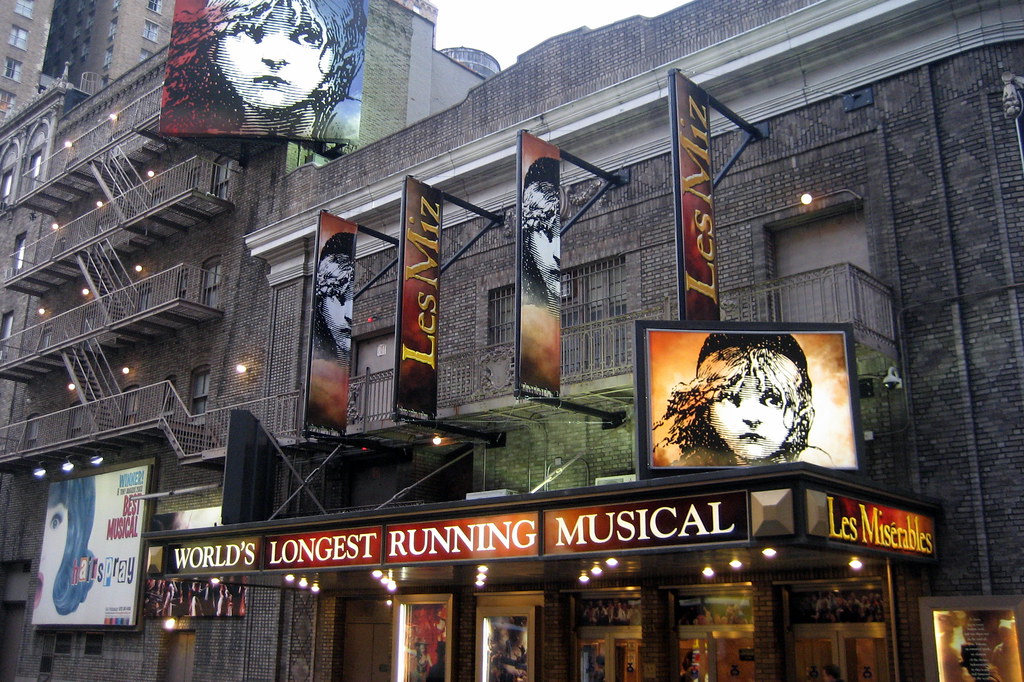Behind the Fast Fashion Industry: There’s More than Meets the Eye
Forever 21 at City Creek Center, Salt Lake City, Utah on Oct. 5, 2021. (Photo by Xiangyao “Axe’ Tang | The Daily Utah Chronicle)
October 8, 2021
Founded in 2008, Shein is one of the fast fashion giants, alongside other companies like Romwe and TopShop, that mass produces trendy clothing to market to the masses.
They pride themselves on releasing a massive quantity of new items each day, boasting 500 new items in a press release to Market Insider in 2020. Now, CMO Molly Miao speculates that there are 700-1,000 new items added each day in 2021.
Shein is one of many contributors to the fast fashion industry. Stores like Forever 21, H&M, and digital stores, such as Fashion Nova, are also considered fast fashion.
Fast fashion is defined as “an approach to the design, creation, and marketing of clothing fashions that emphasizes making fashion trends quickly and cheaply available to consumers.”
Directly following the oil industry, the $2.5 trillion fashion industry is the second most polluting sector on Earth.
The State of Fashion 2019 report claims the average consumer buys 60% more clothing than they did 15 years ago and keeps the clothing for half as long.
“The metabolism of fast fashion has gotten even faster in the age of social media and big data,” the report reads.
The Environmental Protection Agency reports that 84% of unwanted garments end up in landfills.
Jack Bozarth, a fifth-year student at the University of Utah and president of the Enviro Club, said there is a lack of awareness surrounding the issue.
“I just think there’s not a lot of awareness on how much people are wasting by throwing [away] clothes … If you really want to shop sustainably, buy again from companies like Patagonia who are sourcing their products sustainably and really have a mission statement that takes a look at their role and the environmental crisis, and says, ‘What can we do to reduce that?’” Bozarth said.
Additionally, Shein has faced allegations of abusing child labor laws. However, the working ages vary per country. In Bangladesh, the legal working age is 14.
According to Forbes, sweatshops also exist in Los Angeles, with workers working 12-hour days. Fashion Nova was shown to pay some of their sewers $2.77, an amount far below the U.S. minimum wage.
Sarah Snow, the owner of Pib’s Exchange, a vintage clothing store in Salt Lake City, has embraced thrifting and reusing fabric as a way to make old clothes new again.
“Aside from being sustainable because we’re reusing the fabrics you know you can repatch them and you can also rework them, you know you can take different garments, and take sleeves from this one and items for this one — you can recreate,” she said. “Obviously, again, less things filling up the landfill. And it helps with creativity and expressing yourself.”









Jade Cheng • Nov 19, 2021 at 6:07 am
Recent research and reports show that Shein clothings and accessories contain 5 to 20 times of lead and/or chemicals than what regulations allow at least in the US, Canada, and most of Europe. You want that much toxin on you? Years down the line after wearing so much of their stuff if you end up getting ill you would know why! Shein also uses cheap polyester and nylon as primary materials creating tremendous environmentally waste and burden and that is unethical especially in this age of climate change crisis. STOP promoting them!